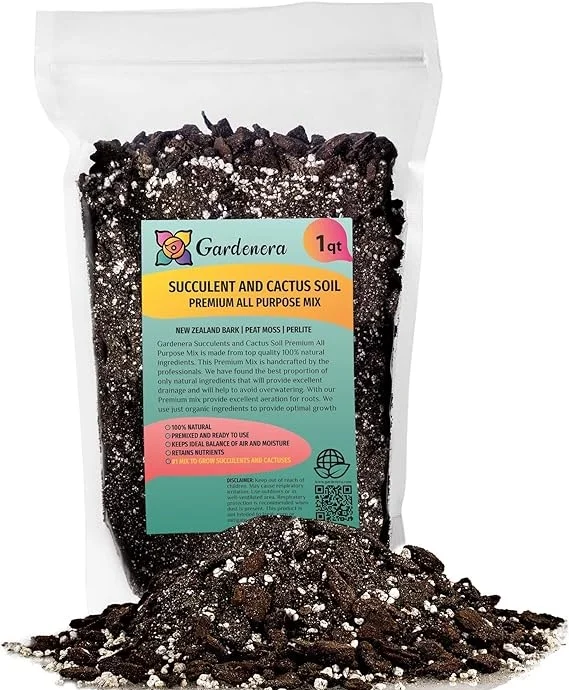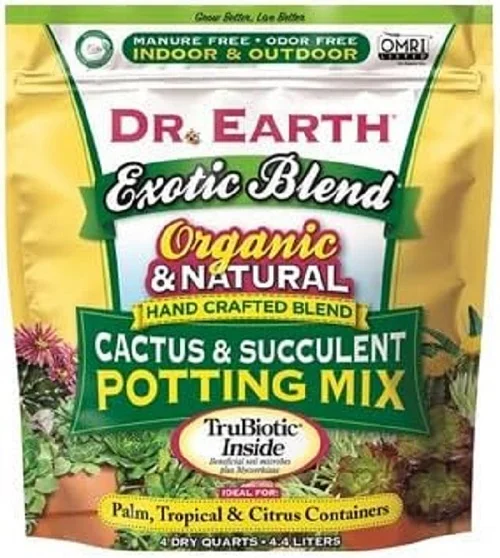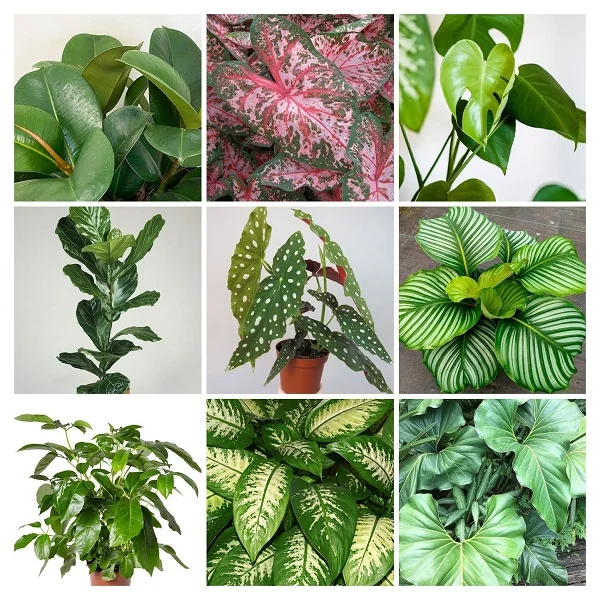Thread Agave (Agave filifera) Care Indoors, Propagation, Problems and Solutions
Some links in this post may be affiliate links
Thread Agave (Agave filifera) requires bright light with some direct sunlight, average to above average warmth, moderate humidity and moderately moist, rich, well-drained soil coupled with monthly feeding during the growing season in the first 2 years of growth.
Agave filifera also called Thread Agave or Thread-leaf Agave is among the popular, evergreen, perennial succulents plants grown in the home for its compact size and ease of care.
Thread Agave forms a beautiful, stemless rosette of long, blade-like, dark-green to a bronzish-green colored leaves. The leaves bear fine thread-like filaments which gives the plant its common name, 'Thread Agave'.
Thread-leaf Agave grows slowly and may take a long time to out grow its pot and therefore it does not require frequent repotting. Avoid disturbing it as much as possible as it does not like to be disturbed.

Botanical name: Agave filifera
Synonyms: Agave filamentosa, Agave pseudofilifera, Bonapartea filamentosa
Family: Asparagaceae
Common names: Thread Agave, Thread-leaf Agave
Origin
Agave filifera is native to Central Mexico from Queretaro to Mexico State.
How big do Thread Agave get?
Thread Agave grows to a height of upto 2 feet and up to 3 feet wide. The leaves are about 1 ft long. On account of its compact size and requirement for sunshine, Thread Agave is one of the best plants for a sunny balcony.
Flower
The flower stalk in Agave filifera is about 11.5 feet tall and is densely loaded with yellowish-green to dark purple flowers which are about 2 inches long.
Is Thread Agave toxic?
Thread Agave Plant produces a sap that can cause skin dermatitis in sensitive people. The leaves of Thread-leaf Agave bear sharp spines which may cause injury if handled with bare hands. Always wear gloves when handling the plant.
Where to Buy
If you would like to add Thread Agave Plant to your collection, you may obtain them online from Etsy (Link to Etsy).
How to care for Agave filifera indoors
To care for Thread Agave indoors, give it bright light with 6-8 hours of direct sunlight, warmth of 21-320C, humidity of 50-55% and moderately moist, rich, well-drained soil coupled with monthly feeding during the growing season in the first 2 years of growth.
Agave filifera requires frequent pruning to maintain it neat and discourage pest and disease infestations. Keep reading for more on these growing conditions and how to achieve them.
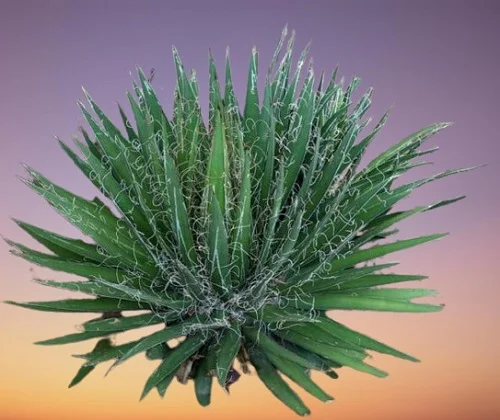
Watering
How often do you water Agave filifera?
Water your Thread Agave thoroughly in spring and summer while allowing the top 2-3 inches of soil to dry out between waterings. Keep the soil moderately moist and avoid overwatering to prevent rotting and death of the plant.
Decrease watering significantly in fall and winter to maintain the soil barely moist as growth is minimal at this time.
Avoiding wetting the center of the rosette as it can lead to rotting; water from the bottom instead. Use water that is at room temperature to avoid cold shock as it can cause reduced growth.
Ensure that the soil is free-draining and the pot has a drainage hole to avoid waterlogging. Thread-leaf Agave is one of the popular plants with low water needs, therefore, it will not tolerate soggy soil.
Light Requirements
Thread Agave grows best in bright light with 6-8 hours of direct sunshine. A bright sunny window with as much sun as possible is ideal.
Where the natural lighting is not sufficient, you may grow Agave filifera under a full spectrum grow light to prevent stunted growth and yellowing.
Regularly rotate the pot to ensure that the plant receives enough light on all sides for uniform growth.
Thread-leaf Agave is one of the sun-loving plants and will thrive under direct sunlight. However, it needs to be acclimated gradually by exposing it to brighter light each day over a period of 2 weeks to avoid scorching.
Temperature and Humidity
Warm temperatures of 21-320C are ideal for Thread Agave. However, it can tolerate lower temperatures of up to 100C. The sudden change in temperature between day and night is excellent for this succulent.
Average humidity of 50-55% is adequate for Agave filifera. It does not require extra humidity and does not mind dry air as it is well adapted to it from its dry natural habitat.
Fertilizer
Feed Thread Agave monthly in spring and summer with a liquid fertilizer (foliar feed), only in the first 2 years of growth.
The established plants do not require regular feeding as too much feeding may encourage blooming leading to premature death.
Agaves are monocarpic plants which means they die once they bloom leaving pups for propagation.
Soil
The best soil for Thread Agave should be rich in organic matter, loose and free-draining to avoid getting soggy soil. The soil should be loose enough to allow water to drain out fast enough. Cactus and succulents soil is perfect for this plant.
Repotting
Repot Thread Agave only when necessary and that is when the plant becomes pot-bound; when the roots begin to grow through the drainage holes.
Use a shallow rather than a deep pot as it has shallow roots. The pot should be only 1 size larger as it prefers to be root-bound.
Make sure that the pot has a drainage hole to prevent the soil from becoming soggy as it can lead to rotting. To protect yourself from the sharp spines, always wear gloves when handling Thread-leaf Agave. Check out these succulents pots available on Amazon.
Pruning
Prune Thread Agave by cutting dead or diseased leaves with sharp strong shears, a long sharp knife or a curved pruning saw to minimize tearing and injury to yourself as the leaves have spines and are quite tough to cut.
Agave filifera Propagation
Thread Agave propagtaion can be done from seeds but they take long to develop. Propagation from offsets that form at the base of the plant is easier and much faster. The best time to propagate Agave filifera is in spring to early summer whin in active growth.
Propagating Thread Agave from offsets
- Seperate the offset from the mother and remove any damaged roots. Select an offset which has several leaves.
- Allow the offsets to dry (callous) for 1-3 days before potting to prevent rotting.
- Select a shallow heavy pot that has a drainage hole to prevent the soil from getting soggy as it can lead to rotting.
- Fill the pot 1/3 way with loose, well-draining soil and moisten it slightly.
- Set the offset in the center of the pot and cover the base with soil as you firm it around the roots.
- Place the set up in a warm, well-lit place away from direct sunlight to avoid sunscorching.
- Water sparingly; water only when the soil is dry, to prevent rotting.
- Allow the new plant to be well established after which you can begin routine care.
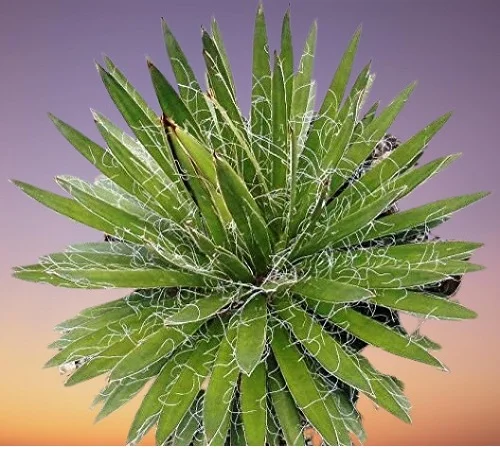
Agave filifera Problems & Remedies
Thread Agave problems are brown and dry leaf spots, wilted and discolored leaves, pests and diseases. Keep reading for more on these conditions and how to fix them.
Brown, dry leaf spots
Brown dry leaf spots on Thread Agave are due to underwatering. Water when the soil begins to dry out and maintain the soil moderately moist but never allow it to dry out completely.
Wilted & discolored leaves
Wilted and discolored leaves on Thread Agave are caused by overwatering in fall and winter. Significantly reduce watering during the cold season to maintain the soil slightly moist as growth is reduced at this time.
Pests
Common pests on Thread Agave are mealybugs and scale insects which are prevalent in dry air conditions.
How to fix it
Diseases
Thread Agave is prone to the following two diseases:
1. Leaf spot disease which is characterized by brown soft leaf spots and is enhanced by overwet conditions coupled with poor air circulation. Improve on ventilation to ensure that there is free air circulation at all times.
2. Basal stem-rot disease which is brought about by overwet conditions. It presents as a rotting plant base followed by yellowing and shrivelled leaves.
Avoid overwatering; water only when the top 2-3 inches of soil dry out and maintain the soil moderately moist.
Use a pot that has a drainage hole and a well-draining soil to avoid getting soggy soil.
You liked it? Share on social media.
Related Content
Amazon Associates Disclosure
Homeplantsguide.com is a participant in the Amazon Services LLC Associates Program, an affiliate advertising program designed to provide a means for sites to earn advertising fees by advertising and linking to amazon.com.

